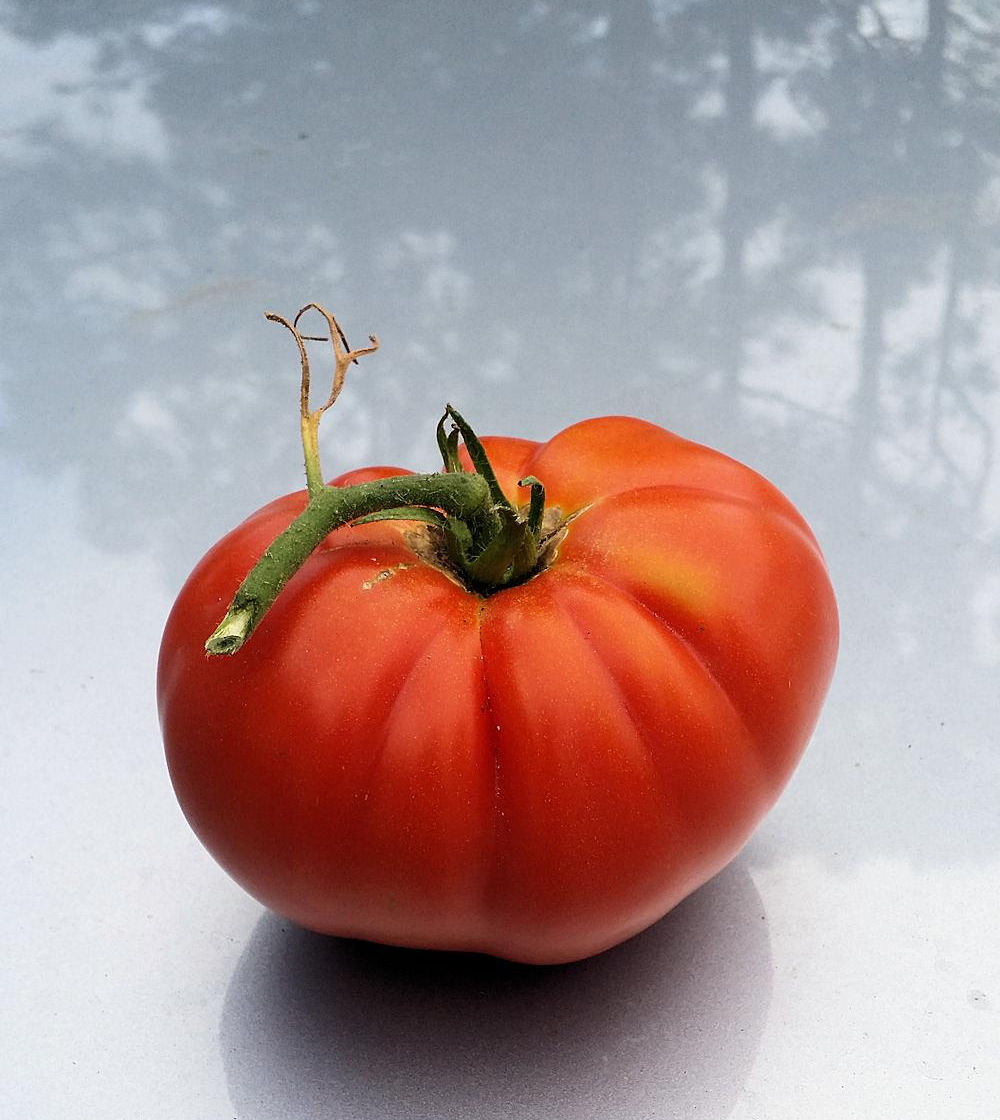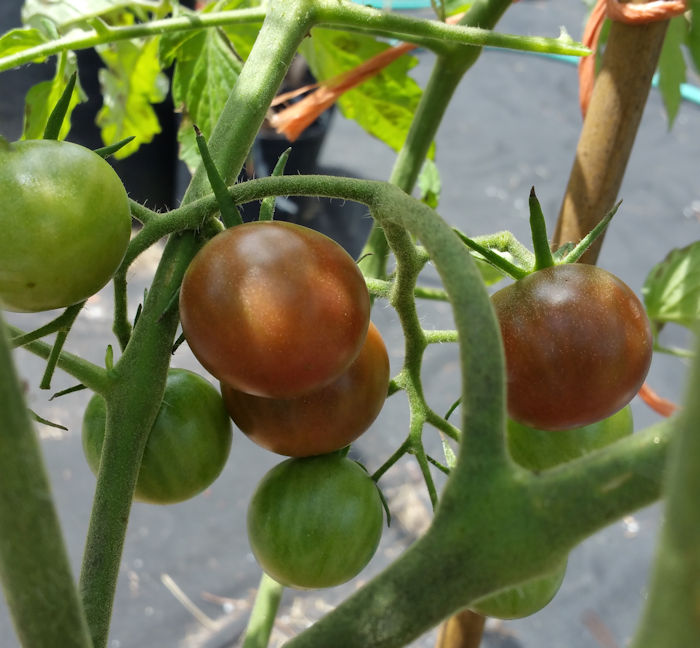Tomatoes For a New Gardener
If you’re just starting out with your garden, you may want to know some good “beginner” tomatoes. What are some tomato varieties that are easy to grow, good to eat and fun to watch develop?
Tip #1 for a New Tomato Garden
If you’ve never grown tomatoes before, I suggest growing just three plants your first season. Why?
First, you want the best chance for your plants to grow and produce tomatoes. This means that you’ll have to watch your plants and see how they react to your particular growing conditions. If you put your plants out into your garden too soon, they might get killed by frost or stunted by chilly weather. If you plant too late, you risk both the plants not pollinating well because it’s too hot, or your fruit not ripening fast enough before season end.
So, your first planting season shouldn’t be more than three tomato plants; the next season, after you become familiar with the growing conditions, you can plant with abandon!
Which Tomatoes for a New Gardener?
I suggest three different varieties for your tomato garden; a determinate, a cherry and an heirloom. These three will give you tomatoes both early on and all through the season.
Determinate: Determinate tomatoes tend to be smaller plants and bear fruit earlier. Many don’t even need staking, which is a plus for the beginning home gardener. Determinate tomatoes tend to be early-to-mid-season tomatoes, so they will be among the first of your homegrown tomatoes harvested. In general, I’ve found the determinate tomatoes to be a bit more resistant to diseases.
Cherry: A cherry tomato is one of the very easiest to grow, and the plants usually very prolific. Cherry tomatoes are small (usually less than 2 ounces) and are born in clusters…sometimes very large clusters of 10 or more tomatoes! Because the plants are so prolific, there are usually tomatoes ready at any given time. Great for salads and snacking. The cherry tomato plants are normally indeterminate, so they continue producing their fruit for the entire season.
Heirloom: Finally, I suggest an heirloom, because most taste absolutely divine! Heirloom tomatoes tend to be mid- to late-season, so they are ready for harvest after the determinate and cherry tomatoes produce. I like the beefsteak-style heirloom tomatoes for their truly tomato taste, and the fact that they make great tomato sandwiches!
So, those are the tomato types I suggest for the first-time tomato gardener. Now on to the varieties you can plant!
Tomato Variety Suggestions
I’ll give you two different groups of three. The first group should appeal to anyone; they are beautiful red tomatoes that are easy to grow.
The second group of three is for anyone who wants to get a little more adventurous. Instead of red tomatoes, you’ll find these in three different colors!
Group #1: Red Tomatoes
My three picks are: Celebrity, Supersweet 100 and Big Beef, and here’s why.
- I have found Celebrity to be a tried-and-true addition to my garden. The plants are easy to grow and it’s rare they need staking. The tomatoes are medium-sized and quite good — much better than the grocery store tomatoes. Beyond regular watering an a little fertilizer now and then, Celebrity produces without fuss.
- Supersweet 100 has been a great performer for me — the plants sprout and grow quickly. The cherry tomatoes are produced rampantly, once the plant has been established. It’s hard to go wrong with this plant, and the cherry tomatoes are very sweet. You will need to stake this plant, however.
- Matina is an early-season heirloom tomato that tastes better than an early-season tomato usually is. The easy to grow tomatoes aren’t all that big for this variety — maybe 3 or 4 ounces — but it’s rewarding to grow. It’s indeterminate, so you can expect it to produce tomatoes into mid-season.
Group #2: Tomatoes of Different Colors
For adventurous souls, here are my picks for different-colored tomatoes: Black Cherry, Clear Pink Early and Cherokee Purple.
- Determinate tomatoes are usually red, but Clear Pink Early is a pink determinate. It’s pink (as you might guess from the name), is relatively compact, and early season.
- Black Cherry is my suggestion for cherry tomatoes. I’ve had great luck with this cherry tomato, but what about the black? They aren’t a true black, but rather a dark dusky color. This is a mid-season indeterminate tomato; it can grow very large and be very prolific. And delicious!
- My final choice is Cherokee Purple. Cherokee Purple is one of the more widely-adapted of the heirloom tomatoes, and pretty easy to grow no matter where you are. A mid- to late-season producer, Cherokee Purple has medium to large fruits, with a heavenly tomato taste. Now as to the purple. never fear, the tomatoes are really a deep pink tinged with brown (much prettier than how it sounds). No neon colors! Altogether one of the nicest and easiest of the heirlooms to grow.
A Word to Florida Gardeners
Summers are brutal in Florida, and hard on the tomatoes; they just don’t pollinate or set fruits well in high temperatures. So, I grow my main crops in two seasons — Spring and Fall.
For a Spring crop, you’ll want to plant seeds by the middle of February (end of January is better). This way most of your tomatoes will be harvested before the temperatures get really hot. Your cherry tomatoes may continue to produce fruits, though, into the summer heat.
For a Fall crop, plant seeds by the end of May; a bit earlier if you live in the inland North Florida and Panhandle area, where it gets cooler sooner.
I can and sometimes do plant crops for Summer and Winter, seeing as I live in South Florida. However, I plant the fewest tomatoes then. While I may have a few dozen tomato plants in Spring and Fall, I may grow only 3 or 4 most summers and winters. But for the beginning tomato gardener in Florida, I don’t recommend starting out with a Summer crop — the chance of tomato diseases is higher, due to the heat and humidity. Spring will be easiest for you.


Leave a Reply